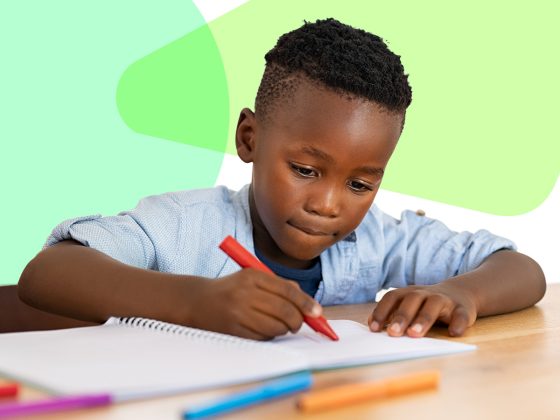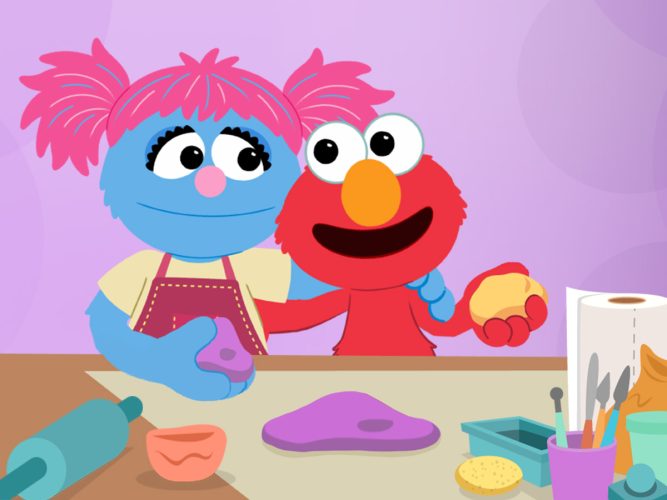
How Children Grieve and How to Help
Consider the different ways children experience grief as they grow, and how you might help.
What is grief?
Grief encompasses the emotional, mental, and physical reactions felt after experiencing a loss. People might grieve after someone’s death, the loss of an important relationship, a way of life, a home, or a job.
The experience of grief varies for every person. Young children, who are just beginning to understand so much about themselves and the world around them, may express their grief in surprising ways.
It’s common for children to experience grief in short bursts. They might feel intense emotions one minute and before you can react, they’re back to playing peacefully. Below, we’ll discuss how children grieve at different ages and how the adults in their circle of care can help them cope. For children of all ages, keep routines as consistent as possible, reassure them that they are safe and loved, and know that they can grow around their grief – and you can, too.
How babies and toddlers grieve
Babies and toddlers don’t understand the concept of death. However, they do understand changes in their environment. Children this age can pick up on distress around them. They might feel abandoned, insecure, or unsettled if a significant person is missing. At this age, children generally can’t use language to ask questions or communicate their feelings.
Grief may show up as:
- increased crying and irritability
- clinginess
- looking for the person who has died
- anxiety around strangers
- less interest in play or food
- regression
How you can help:
- provide physical comfort and affection by holding and cuddling them
- do your best to be calm and speak calmly around them
- provide familiar comforts such as favorite blankets and stuffed animals
- when possible, maintain consistent caregivers
How preschoolers grieve
Preschoolers might not understand that death is permanent. They are very literal at this age, so it’s important to be as clear as possible by using words such as “dead” and “died.” Using euphemisms such as “lost” “passed away” “no longer with us” and “moved on” may cause misunderstanding and confusion. Children might expect that a loved one is coming back and ask repeated questions about it.
Grief in preschoolers may show up as:
- crying more, clinginess and being fearful
- looking or calling out for the person who has died
- tantrums, irritability, stubbornness
- withdrawal
- changes in eating or sleeping habits
- regression (such as bedwetting)
- seeing or sensing the presence of the person who has died
How you can help:
- support them with physical affection such as hugs, encouragement, and holding their hand
- talk about who is caring for them and who is keeping them safe now
- keep them close to trusted adults
- read children’s books together about death and grief and explain death as part of life using things they can see and understand (such as plants, insects, and pets)
- help children learn and use words that describe their feelings
- encourage creative play and movement as ways to express and release big feelings
- value memories of loved ones in tangible ways such as creating a memory box together
How school-aged children grieve
At this age, children understand that death is permanent. They might ask more blunt questions, such as how or why the person died. Children become aware that death is an inevitable part of life and can become anxious about their own lives and the lives of their friends and families.
Answer questions honestly and provide enough information to help children fill in the gaps or gently correct misunderstandings. Remind children that the death is not their fault. Keep in mind that children will ask the questions that they are ready to hear the answers to.
Grief in school-aged children may show up as:
- blaming themselves for the person’s death
- looking for or sensing the person’s presence
- being distracted and forgetful
- having increased anxiety for their safety and the safety of people they care about
- separation anxiety
- not wanting to go to school
- physical complaints (such as stomach aches and headaches)
- suppressing emotions
- withdrawal from usual activities
- being quiet or not showing any emotional responses
- strong emotional reactions such as anger, guilt, or embarrassment
- behavioral issues (such as aggression, tantrums, defiance, trouble at school)
- change in eating and sleeping habits
- regression (such as bedwetting, wanting to sleep in caregiver’s bed)
How you can help:
- reassure your child they are safe and tell them who is looking after them (they may want to know who will look after them if you die)
- keep routines and boundaries on expected behavior (boundaries help children feel safe)
- encourage conversations about their feelings and answer questions honestly
- talk about death being a part of life, observe changes in nature, and read books about death and dying together
- include them in planning ways to honor the person who has died, such as by making a memory box or scrapbook
- encourage creative play, movement, and/or art making as ways to express their big feelings
There’s no time limit on grief. It can endure for months or years. As they grow, children will likely revisit questions and ask new ones to help them make sense of their experiences. You won’t have all the answers, and that’s okay. Be assured that your caring presence — your willingness to listen, comfort, and simply be with your child—will help them move through and grow around their grief.

